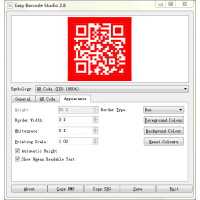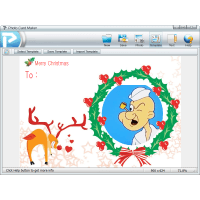TIFF to Postscript Converter Command Line is a software to batch convert from TIFF files to Postscript (PS/EPS) files. PostScript is a file format that can be both vector image and document file. It can contain vector images and text at the same time. PS file holds an instruction about how to print. As it supports both text and images so it can instruct printers how to print the file. PS files are later improved as PDF format.
PostScript (PS) is a computer language for creating vector graphics. It is a dynamically typed, concatenative programming language. It is used as a page description language in the electronic and desktop publishing areas.
Name
tiff2ps - convert a TIFF image to PostScript.
Synopsis
tiff2ps [ options ] input.tif ...
Description
tiff2ps reads TIFF images and writes PostScript or Encapsulated PostScript (EPS)
on the standard output. By default, tiff2ps writes Encapsulated PostScript for
the first image in the specified TIFF image file.
By default, tiff2ps will generate PostScript that fills a printed area specified
by the TIFF tags in the input file. If the file does not contain XResolution or
YResolution tags, then the printed area is set according to the image
dimensions. The -w and -h options (see below) can be used to set the dimensions
of the printed area in inches; overriding any relevant TIFF tags.
The PostScript generated for RGB, palette, and CMYK images uses the colorimage
operator. The PostScript generated for greyscale and bilevel images uses the
image operator. When the colorimage operator is used, PostScript code to emulate
this operator on older PostScript printers is also generated. Note that this
emulation code can be very slow.
Color images with associated alpha data are composited over a white background.
Options
-1
Generate PostScript Level 1 (the default).
-2
Generate PostScript Level 2.
-3
Generate PostScript Level 3. It basically allows one to use the /flateDecode
filter for ZIP compressed TIFF images.
-a
Generate output for all IFDs (pages) in the input file.
-b
Specify the bottom margin for the output (in inches). This does not affect the
height of the printed image.
-c
Center the image in the output. This option only shows an effect if both the -w
and the -h option are given.
-d
Set the initial TIFF directory to the specified directory number. (NB:
Directories are numbered starting at zero.) This option is useful for selecting
individual pages in a multi-page (e.g. facsimile) file.
-e
Force the generation of Encapsulated PostScript (implies -z).
-h
Specify the vertical size of the printed area (in inches).
-H
Specify the maximum height of image (in inches). Images with larger sizes will
be split in several pages. Option -L may be used for specifying size of split
images overlapping.
-W
Specify the maximum width of image (in inches). Images with larger sizes will be
split in several pages. Options -L and -W are mutually exclusive. -i
Enable/disable pixel interpolation. This option requires a single numeric value:
zero to disable pixel interpolation and non-zero to enable. The default is
enabled.
-L
Specify the size of overlapping for split images (in inches). Used in
conjunction with -H option.
-l
Specify the left margin for the output (in inches). This does not affect the
width of the printed image.
-m
Where possible render using the imagemask PostScript operator instead of the
image operator. When this option is specified tiff2ps will use imagemask for
rendering 1 bit deep images. If this option is not specified or if the image
depth is greater than 1 then the image operator is used.
-o
Set the initial TIFF directory to the IFD at the specified file offset. This
option is useful for selecting thumbnail images and the like which are hidden
using the SubIFD tag.
-p
Force the generation of (non-Encapsulated) PostScript.
-r
Rotate image by 180 degrees.
-s
Generate output for a single IFD (page) in the input file.
-w
Specify the horizontal size of the printed area (in inches).
-x
Override resolution units specified in the TIFF as centimeters.
-y
Override resolution units specified in the TIFF as inches.
-z
When generating PostScript Level 2, data is scaled so that it does not image
into the dead zone on a page (the outer margin that the printing device is
unable to mark). This option suppresses this behavior. When PostScript Level 1
is generated, data is imaged to the entire printed page and this option has no
affect.
Examples
The following generates PostScript Level 2 for all pages of a facsimile:
tiff2ps -a2 fax.tif | lpr
To generate Encapsulated PostScript for a the image at directory 2 of an image
use:
tiff2ps -d 1 foo.tif
If you have a long image, it may be split in several pages:
tiff2ps -h11 -w8.5 -H14 -L.5 foo.tif ] foo.ps
The page size is set to 8.5x11 by -w and -h options. We will
accept a small amount of vertical compression, so -H set to 14. Any pages
between 11 and 14 inches will be fit onto one page. Pages longer than 14 inches
are cut off at 11 and continued on the next page. The -L.5 option says to repeat
a half inch on the next page (to improve readability).
TIFF to Postscript Converter Command Line
- Product Code: MOD191113225951
- Availability: In Stock
- Viewed: 47089
- Sold By: eDoc Software
- Seller Reviews: (0)
-
$39.95
Available Options
Related Products
Digit OCR Solution for Handwritten and Printed Digit Recognition
Digit OCR is a solution to extract handwritten & printed numbers from various kinds of documents, im..
$0.00
TIFF Combine Command Line
TIFF Combine Command Line is also a TIFF Compressor Command Line software, it can be used to compr..
$39.95
SVG to PDF Converter Command Line
SVG to PDF Converter Command Line is a best software to convert scalable vector graphic (.SVG) gra..
$99.95
HTML to PDF Conversion API
HTML to PDF Conversion API is a professional solution that lets you create PDF from web pages and ..
$59.95
Save36%
PDF to DWG Converter Command Line
PDF to DWG Converter Command Line does batch convert PDF to DWG and PDF to DXF format for fast and..
$125.00 $195.00
Easy Barcode Generator
Easy Barcode Generator is a suite of programs to allow easy encoding of data in any of the wide ra..
$39.95
docuPrinter GUI, Command Line and SDK
docuPrinter SDK is a Virtual PDF/PS/Image Printer Driver -- Convert, Email, Print or Combine docum..
$79.00
Photo Card Maker Software
Photo Card Maker allows you to Create Photo Cards by Yourself in a Minute. Designing a good-lookin..
$19.95
TIFF Toolkit -- Compress, Merge, Split, Extract, Compare and Maintain TIFF files
TIFF Toolkit is a powerful application tool which can compress TIFF image files to small size ones..
$19.95
Image Watermark Software
VeryUtils Image Watermark software does add watermarks to image files quickly. Batch watermark tho..
$39.95
PDF Page Resizer Command Line
PDF Page Resizer Command Line is a Command Line application to change the PDF paper size. With thi..
$59.95
Photo Watermark Command Line
Photo Watermark Command Line is a very powerful tool for manipulating and combining images. You ca..
$19.95
AI Image Background Remover Command Line
VeryUtils AI Image Background Remover Command Line is the first image background removal applicati..
$99.95
Tags: tiff tools, tiff to ps, tif to ps, append tiff to ps, tiff to ps convert, tiff to ps converter, tiff to ps, tiff2ps, tifftops, tiff to ps download, tiff file to ps, tif to ps convert, multi-page tiff to ps, tif to ps, tif2ps, tiftops, image to ps, image2ps, ps converter, create ps files, append ps, tiff to postscript, tif to postscript, append tiff to postscript, tiff to postscript convert, tiff to postscript converter, tiff to postscript, tiff2postscript, tifftopostscript, tiff to postscript download, tiff file to postscript, tif to postscript convert, multi-page tiff to postscript, tif to postscript, tif2postscript, tiftopostscript, image to postscript, image2postscript, postscript converter, create postscript files, append postscript, tiff to eps, tiff2eps, tif to eps, tif2eps




















